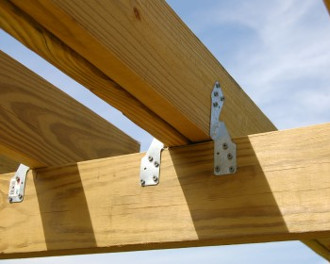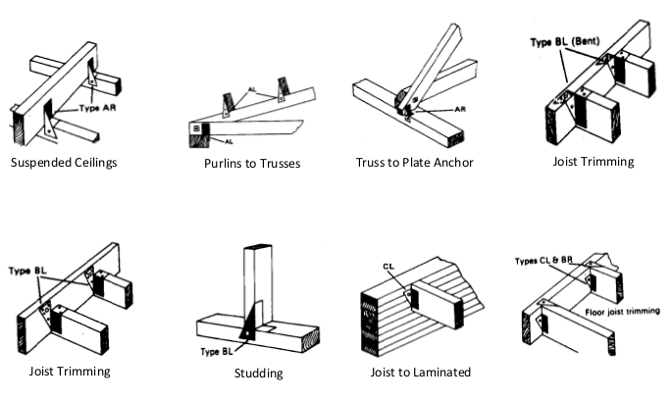Angle Brackets and Framing Anchors
There are no products to list in this category.
Our Infoline is closed now and will reopen on the 05.01.2026. All orders placed now will be delivered after that date. Merry Christmas and Happy New Year!
 A full range of sizes general purpose brackets - galvanised steel, stainless steel - are available to suit all applications. They are used when one member crosses another or one member is trimmed into another. Made from galvanised steel EN 10346 DX51D Z275. Grade 1.4301 austenitic stainless steel to EN 10088-2.
A full range of sizes general purpose brackets - galvanised steel, stainless steel - are available to suit all applications. They are used when one member crosses another or one member is trimmed into another. Made from galvanised steel EN 10346 DX51D Z275. Grade 1.4301 austenitic stainless steel to EN 10088-2.
Framing anchors are used for stronger nailed joints and economical secondary connections in timber framing that is an effective, versatile and economical method of providing strong, mechanical joints.
Types of Brackets

When making home repairs and renovations, angle brackets are essential. They can be used to put up shelves at home; an angle bracket can help the shelves carry heavier loads. A heavy angle bracket, on the other hand, is used as a construction bracket.
Truss Clips and Framing Anchors
Trusses and rafters can be secured to the wall plate by skew nailing, but there is a danger of skew nails disturbing the joint, or being deflected by other connectors, which would result in an ineffective joint. Skew nailing through the connector plate at the heel usually results in splitting of the timber in the bottom chord, weakening one of the most heavily loaded joints. Its much safer and effective to use framing anchors or truss clips. It is strongly recommended that the truss clips are used, whether or not it is specified on the drawing. All metalwork, truss clips, framing anchors including nails should be galvanised to prevent corrosion.
Truss clips hold truss or rafter to the wall plate, while framing anchors connect purlins to trusses, various trimmed openings and elements in the ceiling joist structure and to studding.
Framing Anchor Installation

There is also an Universal Anchor that can be bent on site to suit all applications, Specially bent anchor that has a large hole to permit the fixing of covering surface materials.

There are no products to list in this category.